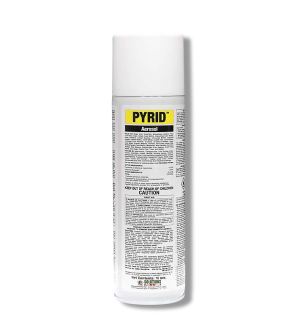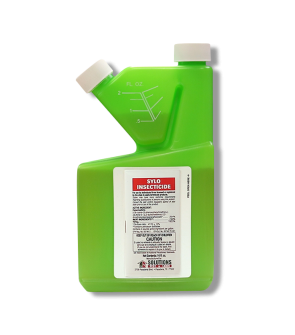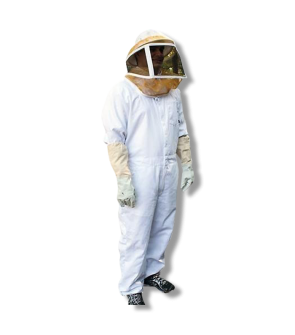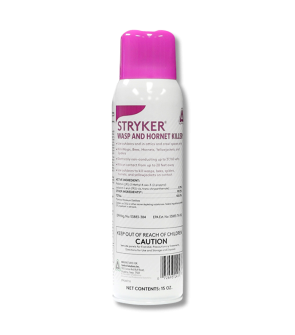Paper Wasp Control
Most Effective Products
Paper Wasp Control: How to Get Rid of Paper Wasps
Paper wasps are a common problem for homeowners in the United States due to their tendency to build nests in or around a home. Paper wasps are actually a beneficial insect because they help remove pesky bugs which may invade our yard and home. For example, their primary sources of food are caterpillars, beetle larvae, and other bugs of that nature which like to eat from crops and gardens.
The problem arises with Paper Wasps due to their aggressive nature. Paper wasps will barge onto a homeowner's property and build a nest where they weren't invited and because they are so territorial, they will readily sting humans who come near their nest. Stings can be painful for some and if they are allergic, it could cause a reaction that may put them in the hospital.
If you have paper wasps gathering around your home or have set up a nest, it’s crucial to get on the attack before they start attacking you. Our DIY paper wasp treatment guide presents the best tips and methods to kill wasps and destroy their nest quickly and affordably.
By following our step-by-step directions and applying our recommended products, we guarantee you will kill invading Paper Wasps and their nests and make it safe to enjoy the outdoors again.
Identification

Make sure that you properly identify Paper Wasps before proceeding with a treatment program. Misidentification can lead to using the wrong treatment methods and can result in wasted time and money. Here are some distinguishing traits to watch out for:
- Paper Wasps are most commonly black or brown in color, with black wings and either red or yellow markings.
- Often people may mistake Paper Wasps for Yellow Jackets. What distinguishes Paper Wasps from other species is their thinner waists and longer legs, while bees and yellowjackets have much smaller legs and thicker bodies.
- Most paper wasps can grow to 1 inch in length, but few can grow as large a 1.5 inches.
- Paper Wasps do have a stinger but it is only the female wasps that have them. They have the ability to sting target multiple times.
- Paper Wasps get their name from the type of material they use to make their nests which is a mixture of plant material and their saliva which looks and feels like paper. These nests do not have an outer shell like most nests so the inner compartments are clearly visible showing the wasps moving in and out and laying eggs.
Use the description and image above to help you in identifying Paper Wasps in your yard. If you are not totally sure, reach out to us and one of our pest control experts will help you to properly ID the pest as well as offer you product recommendations for control.
Inspection

Perform a detailed inspection of your yard to locate the paper wasp nest and determine whether there is more than one point of entry into the nest. It's important to be well covered during the inspection as Paper Wasps will not hesitate to try and sting you if you get too close.
Where To Inspect
Wasps nests can be found outdoors around trees & shrubs. Around the home, they can set up a nest on window and door frames, attics, vents, and chimneys. In your yard, they can build a nest on fences and utility lines. Paper wasps have been known to even create nests indoors, especially if there are high ceilings.
What To Look For
Find a flying Paper Wasp as they will be hard to miss. If you do happen to spot one, observe where it flies and they can pretty soon lead you right to their nesting area. Once you have located the nest, you can move forward to treatment.
Treatment
Before carrying out any form of Paper Wasp control, make sure you have on protective gear. This can be achieved by wearing either thick long-sleeved clothing or to guarantee the highest possible safety, a professional bee suit.
Make sure to cover up as much exposed skin as possible as this will not only help to prevent stings, but will also keep you from being overexposed to chemical pesticides that will be sprayed to control paper wasps and their nests. Thick gloves and safety glasses are also a wise choice to put on prior to treatment.
To treat Paper Wasps, we recommend applying Stryker Wasp and Hornet Killer directly to nests and to knock down wasps that are flying around. We also recommend applying Sylo Insecticide as a barrier around your home and yard to discourage Wasps from wanting to stick around and make nests on your property.
Step 1 - Outdoor Treatment with Stryker Wasp and Hornet Killer
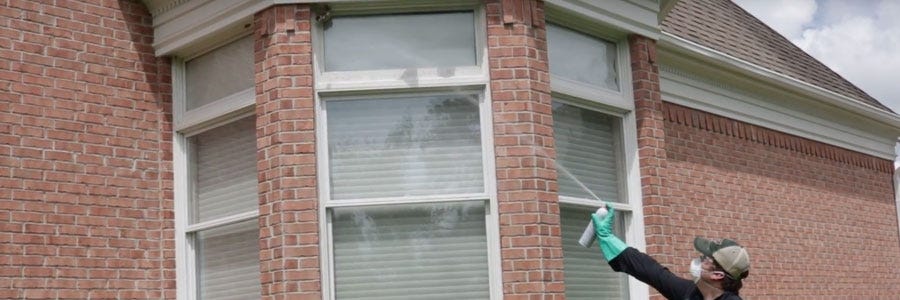
Stryker Wasp and Hornet Killer is an aerosol spray that delivers a quick knockdown to Paper Wasps and their nests and has a tremendous 20-foot reach when spraying.
Wait until the evening or night when all the wasps are inside the nest and then simply shake, point, and spray. Spray directly at the nest entrance for 6 to 8 seconds. Spray with the wind at your back and always spray at an angle. Drench the whole nest and kill the remaining wasps that may fly out to sting in retaliation for their home being destroyed.
Step 2 - Barrier Treatment with Sylo Insecticide
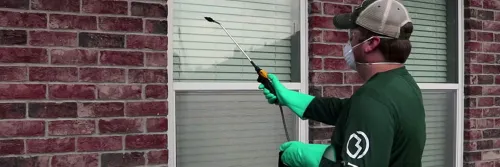
Sylo is another highly recommended product as it is typically used as a barrier treatment to keep paper wasps away and not re-establish. The product has a long-time residual effect that will keep killing and repelling long after the application.
To apply Sylo Insecticide you will first need to calculate the square footage of the treatment area. You can do this by measuring and multiplying the area length times the width (length x width = square footage). Sylo Insecticide can be applied at a 0.1% emulsion or a rate of 0.5 oz. of Sylo in a gallon of water.
Mix the Sylo Insecticide in a handpump sprayer by first filling the tank halfway with water. Add the appropriate measured amount of Sylo and then fill with the remaining half-gallon of water. Agitate the sprayer until the product is well mixed and you'll be ready to spray.
Spray the foundation of your home with the Sylo Insecticide mixture as a low-pressure spray by spraying 3 feet up and 3 feet out from the foundation and also spray, window frames, door frames, eaves, soffits, rain gutters, and areas where wasps or bees have been seen. This will leave a residual barrier that will discourage Wasps from frequenting or building nests for up to 90 days. Do not let people or pets enter areas sprayed until 2 to 4 hours.
Step 3 - Apply Pyrid Aerosol

For any wasps that you directly encounter, spray Pyrid Aerosol. Pyrid is a Pyrethrum-based insecticide that is excellent for quickly knocking down a wide variety of problem pests, including Paper Wasps.
To use, stand two feet away from the wasp and spray the wasps directly. It is best that you vacate the treated area briefly until all vapors have dispersed before it is safe to return.
Prevention

After you have applied pesticides to address the Paper Wasps, there's still a chance they could make a return. Here are some preventative measures to take to ensure Paper Wasps don't become a regular intruder:
- Paper Wasps are attracted to organic material so keep your yard clean by picking up debris and leaf litter and taking out the trash regularly.
- Trim back overhanging tree branches and shrubbery to limit areas that they can nest.
- Repeated applications of Sylo Insecticide every few months can also help to keep paper wasps away.
- If you spot any reformed Paper Wasp nests, reapply Stryker Wasp and Hornet killer to quickly knock it down.
Also be sure to keep your property clean. Paper wasps are attracted to organic matter, so regularly taking out the trash and keeping trash cans sealed will deter wasps.
Key Takeaways
What are Paper Wasps?
- Paper wasps are a beneficial insect to have since they likes to eat smaller bugs but they are a threat because of their aggressive behavior and willingness to sting humans and form nests near homes.
- Paper Wasps make their nests with a paper-like material secreted out of their mouths. Wasp’s nests can be found hanging from tree branches or under the ground. Inside homes, Paper wasps build their nests in attics and spaces between walls where they are not frequently disturbed.
How To Get Rid of Paper Wasps and their Nests
- Our top recommendations for treating paper wasps is to track down the nest and spray Stryker Wasp and Hornet killer directly to the nest and to any Paper Wasps that escape from the nest during the attack.
- Apply Sylo Insecticide for creating a preventative barrier around the home so they won't make new nests.
- For any Paper Wasps you encounter directly, use Pyrid Aerosol to deliver a quick knockdown.
Preventing Paper Wasp Reinfestation
- Prevention of paper wasps can be successful with periodic applications of Sylo Insecticide and regular sanitation.

